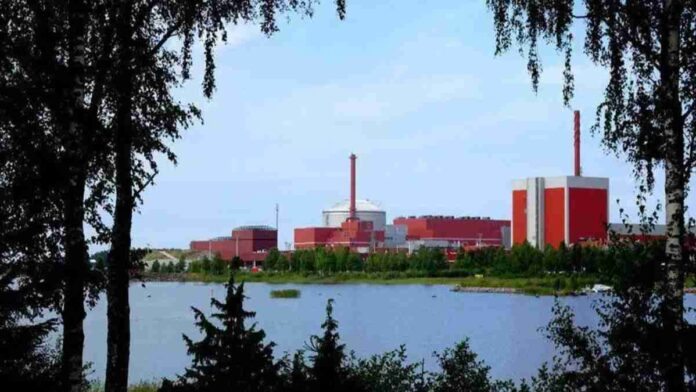As a result of Finland’s commitment to the use of renewable power sources, the country’s energy prices have decreased to negative levels. Both the construction of a new nuclear reactor and the occurrence of floods that were not anticipated have contributed to an abundance of clean energy.
Last week, an unusual situation arose in Finland as the country’s clean energy supply exceeded demand, leading to a surplus of power and causing energy prices to fall to negative levels.
Amidst the ongoing energy crisis in Europe, the Nordic nation reported a significant drop in its spot energy prices to zero before midday on Wednesday. As per Jukka Ruusunen, the CEO of Fingrid, the grid operator of Finland, the daily average electricity price was “slightly” below zero.
It seems that ordinary citizens of Finland are not receiving any form of compensation for their energy consumption. It is common for individuals to pay a set price for electricity, rather than the fluctuating market price. Additionally, consumers typically pay an additional fee on top of the cost of the electricity they acquire.
The decline in prices can be attributed to two main factors: the unexpected abundance of renewable energy and the Finns’ decision to reduce their energy consumption in response to the crisis sparked by Russia’s invasion of Ukraine.
Ruusunen has stated that electricity in Finland is now abundant and nearly emission-free. He further added that Finnish citizens can take pride in utilizing electricity. In a matter of mere months, Finland has transformed from a nation grappling with an energy deficit to one boasting an energy surplus.
In a surprising turn of events, the nation has made a complete reversal in its stance on energy consumption. Just a few months ago, citizens were advised to be mindful of their energy usage, but now the situation has taken a dramatic shift.
Last winter, the predominant subject of discussion among many was the quest for additional energy sources. Currently, there is a significant focus on devising strategies to decrease our production. As per Ruusunen’s statement to Yle, there has been a significant shift from one end of the spectrum to the other.
In response to Russia’s invasion of Ukraine, the government has taken measures to limit the country’s energy imports from its neighbor. This has resulted in an energy crisis within the country.
In a recent development, a new nuclear reactor has been launched in Finland, providing a significant boost to the country’s power supply. With a population of approximately 5.5 million people, this new addition is expected to provide a substantial amount of electricity to meet the growing demands of the populace. The reactor was brought online in April of this year, marking a significant milestone in the country’s energy sector.
The National reports that the recent opening of Olkiluoto 3, Europe’s first new nuclear reactor in over 15 years, has led to a significant drop of 75 percent in energy prices in Finland. In a significant development, the price of electricity has witnessed a sharp decline from 245.98 euros per megawatt-hour in December to 60.55 euros per megawatt-hour in April. This reduction has brought a considerable relief to the consumers.
The location of the latest nuclear reactor, known as Olkiluoto 3, can be located on a Western European map. Google Maps, the popular online mapping service, has become a go-to tool for millions of people worldwide.
The country has established an ambitious goal of achieving carbon neutrality by the year 2035 and has been actively pursuing the implementation of renewable energy alternatives. According to a recent report by The National, Ruusunen has stated that Finland’s primary source of electricity ought to be wind power by 2027.
One of the contributing factors to the decline in energy prices is this. The deluge of meltwater in several northern European countries has led to flood warnings. However, Finland is making the most of this situation as its hydroelectric facilities are working overtime to generate a copious amount of energy.
During spring floods, a common occurrence is the implementation of forced production as slowing down production is not an option. According to sources, production cannot be halted, hence the reason for this situation.”According to Ruusunen, during the spring season, the capacity of hydropower to regulate is generally low due to the significant volume of water.
In Finland, a new challenge has emerged in the energy sector. Energy operators are facing the possibility of being unable to continue their operations as usual due to the declining value of electricity, which is now worth less than the cost of production.
According to Ruusunen, production that fails to yield profits at current prices is typically eliminated from the market. As hydropower remains constant and cannot be adjusted, other energy producers, such as nuclear, are reportedly considering reducing their production to prevent financial losses.
According to Ruusunen, Finns are now free to consume as much energy as they desire.




